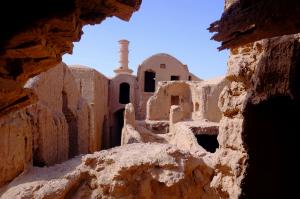 Before Zionism, several efforts were attempted to bring Jews to their own land. These included:
Before Zionism, several efforts were attempted to bring Jews to their own land. These included:
-Sabbatai Zevi, a Sephardis Jewish mystic from Smyrna (now Izmir, Turkey), claimed to be the long-awaited Jewish Messiah. Zevi also founded the Donmeh Sect (crypto-Jews). In February 1666, he converted to Islam.
Prior to then, in 1648, Zevi began declaring to his followers he was the true Messiah and announced the Tetragrammaton (the four-letter YHWH name of the national God of Israel (yodh, heh, vav, heh), which evolved into Yahweh and Yehovah. Now pronounced Elohim or Adonai.
This name is found in the Torah, the Song of Songs, and the Hebrew Bible minus the books of Esther and Ecclesiastes. The pronunciation of this name was prohibited to all Jews except the High Priest in the Temple in Jerusalem on the Day of Atonement.
Sabbatai Zevi professed to be able to fly, but not publicly, as the Jews were not worthy of seeing him perform such a feat. Zevi claimed to have visions of God. Abraham Yachini's forged "The Great Wisdom of Solomon" alleged Zevi's messiahship was real.
Zevi gained many followers in Salonica (Thessalonika), the second largest city in Greece. His mystical events included the celebration of his marraige as the "One Without End". He was banished and ended up in Cairo, Egypt from 1660 to 1662.
In 1663, Zevi moved to Jerusalem and continued his mystical interpretations of psalms and Spanish love songs. He gained followers in Gaza, Aleppo, Italy, Germany, the Netherlands, and Constantinople. Zevi's downfall began when he converted to Islam.
Zevi's legacy includes somewhere in the neighborhood of 100,000 Donmehs in Turkey who still practice Muslim in public and Mystical Judaism in private.
Other examples include:
-W.D. Robinson, who in 1819, proposed the establishment of the Upper Mississippi region for Jewish settlement.
-Warder Cresson, the American Consul to Jerusalem, who in 1850 established an agricultural community in the Valley of Rephaim southwest of Jerusalem. This was an ancient route from the coastal plain to the Jordan Hills where King David twice defeated the Philistines (2 Samuel 5:17-22 and 1 Chronicles 14:13-16).
-English Journalist Abraham Benisch, and Bohemian Bibliographer Moritz Steinschneider, who in 1835 attempted to organize a Jewish immigration in Prague.
-Mordacai Noah, an American playwright, and the most important Jewish lay leader in New York of the early 19th Century, who, in 1825, attempted to create a Jewish refuge in Grand Isle, New York.
-British financier Moses Montefiore, who established a Jewish colony in Palestine. In 1860, he also built the first Jewish residential settlement and almshouse outside the old walled city of Jerusalem (Mishkenat Sha' ananim).
-British author of "Piccadilly," and member of Parliment, Laurence Oliphant, who attempted to bring Jews from Poland, Romania, the Turkish Empire, and Lithuania to Palestine.
-The beginning of the construction of the New Yishuv (body of Jewish residents in the Land of Israel and Mandatory Palestine), the usual date of the arrival of the Bilu Group (to settle the agricultural Land of Israel) in 1882.
-The first Aliyah that came from Poland and the Ukraine to escape the state-led persecution of Jews in the Russian Empire, as well as the violent riots with massacres that occurred there in an effort to expel the Jews, especially in the Pale of Settlement (western regions of the Russian Empire).
Next Time: Zionism #5: Christian Zionism
Author Notes
the ghost city, by supergold selected to complement my posting.
So thanks supergold, for the use of your picture. It goes so nicely with my posting.
|
|



